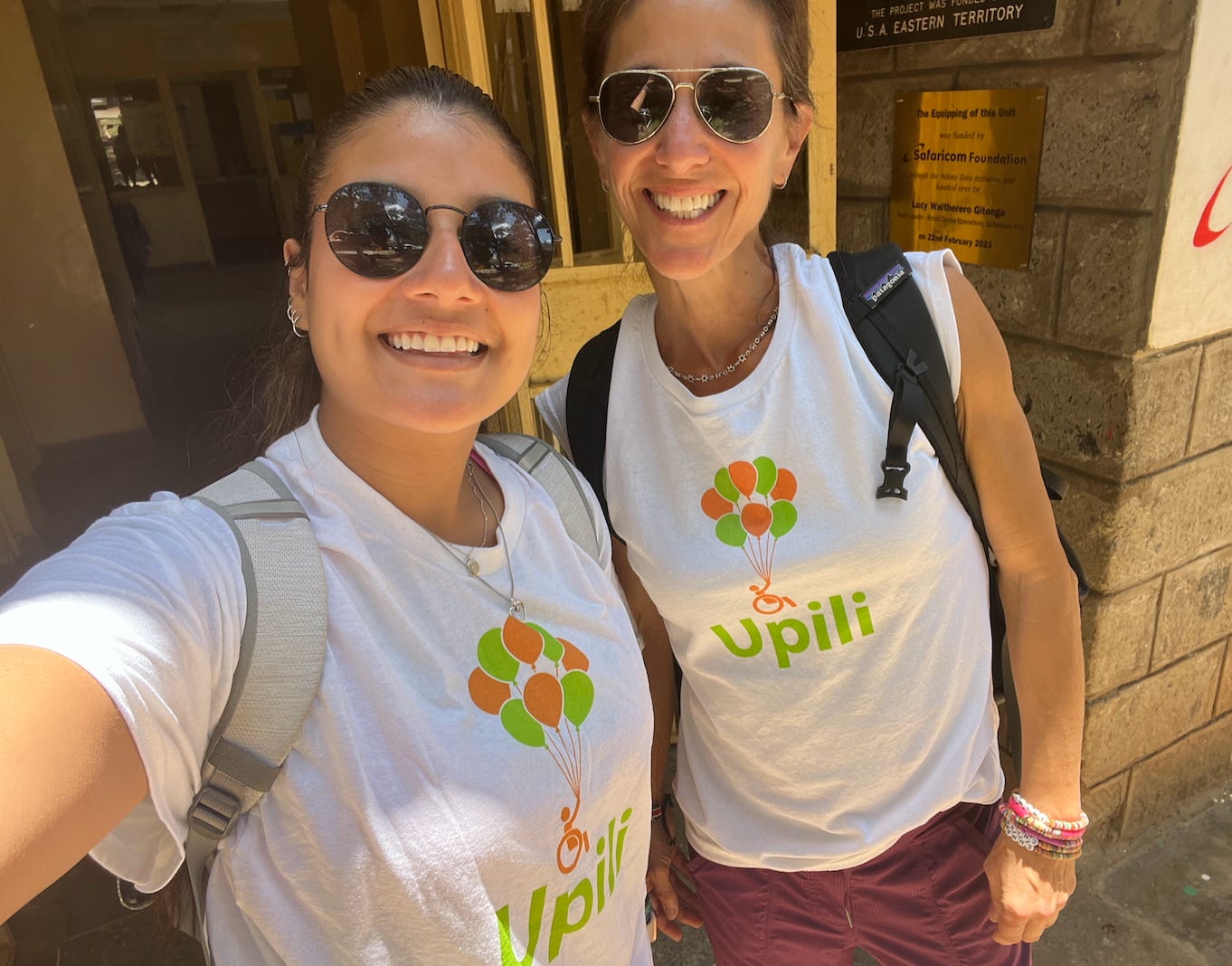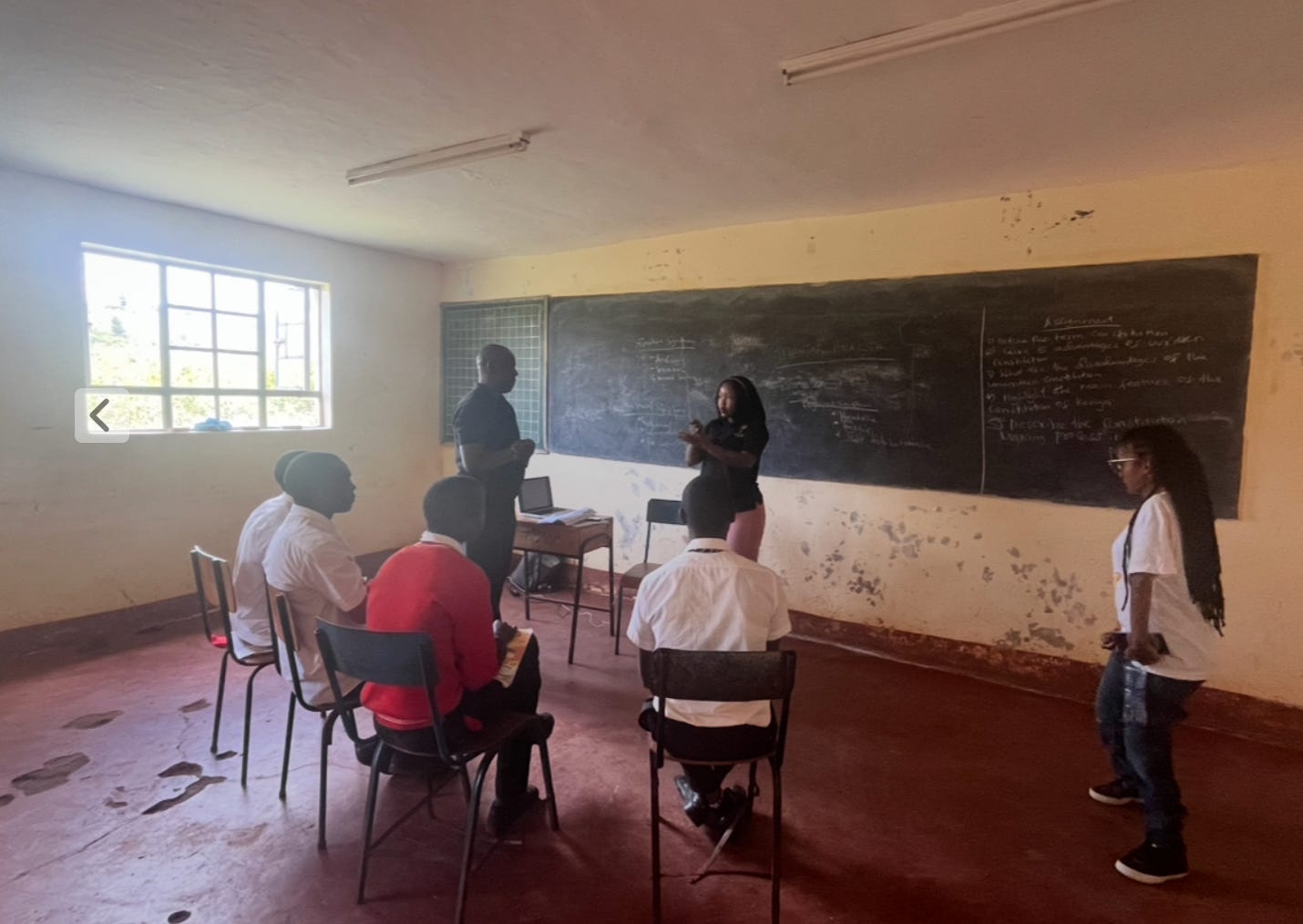Consistency is the thread I keep tugging on. Sometimes it shows up in the smallest habits, other times in the hardest conversations, but it always insists on being noticed.
It shows up everywhere: from building habits that connect me to my future self to working alongside my team in Kenya and it always has something new to teach me.
I don’t often mention Kenya here, but it’s central to my work. My team and I are building mental health programs for Students with Disabilities, including a chatbot called Tumaini. Tumaini means hope in Swahili and that word keeps reminding me consistency is how hope is lived out in practice.
Jonathan Sacks once wrote: “It takes no courage to be an optimist, but it takes a great deal of courage to have hope.”
The more I sit with his words and the more I reflect on my life and recent Kenya trip, the more I realize: consistency is how we practice that courage.
Optimism, Hope, and Consistency
It waits for circumstances to brighten. It’s when we tell ourselves things like the universe has my back or something good is bound to happen without demanding more of ourselves than simply belief.
Hope, however, is a choice. Hope stands firm even when the road is uneven. Hope asks us to invest in a future we can’t fully see, and to keep moving forward even when there’s no evidence to reassure us.
Consistency is our practice. It’s how hope gets lived out by us day after day. It’s the proof that we aren’t only wishing for change —> we’re laying the bricks to build toward it. Every time we return, recommit, or repeat, we’re saying: I’m not waiting for a better future. Each act of consistency is me staking a claim in tomorrow.
When optimism feels thin (as it can a lot these days) consistency gives us something to grip:
• Ritual over results. Consistency isn’t about achievement: it’s about giving today a frame and a rhythm.
• Return as rebellion. Coming back after setbacks isn’t passive; it’s a refusal to let struggle have the last word.
• Each act as evidence. Every repeat, no matter how small, is a signpost: hope is alive here.
What I’ve Seen in Kenya
The last few weeks I saw consistency look like students showing up for group counseling week after week, even when the conversations are hard.
It was using counselors fluent in Kenyan Sign Language to make sure students are not just present, but fully understood.
And it was parents who keep returning to learn how to support a child they once feared might not have a future.
Watching these patterns unfold, I realized consistency doesn’t need big wins to matter. It just needs the courage to return.
Each of these small, repeated acts is a declaration: hope lives here.
What That Means for Us
Now that I’m back home, consistency often looks quieter. It looks less dramatic, but no less real.
• Taking a daily walk, even when the day feels heavy.
• Writing one more paragraph, even if no one is waiting to read what I write.
• Returning to a new habit after weeks away, instead of giving up.
Yours will look different and that’s the point: consistency is personal, but the courage behind it is universal.
How to practice consistency as hope:
• Keep the promise small. Write one line. Do one push-up. Call one friend. Small isn’t weak —> it’s sustainable.
• See the comeback as the point. The magic of consistency isn’t in never breaking; it’s in always finding our way back.
• Let the act stand on its own. We don’t need proof, applause, or evidence. The fact we show up is the success.
Consistency Is Hope in Action
Here’s the heart of it:
• Optimism is a feeling
• Hope is a choice
• Consistency is the practice that keeps hope standing when optimism falls.
This isn’t about streaks or perfection. It’s about refusing to let optimism’s collapse be the end of the story.
Now that I’m back in Austin, I’m reminded again: consistency doesn’t travel with me. It lives in me. And it’s the reason given allll the options to choose otherwise my hope still stands.




“Small isnt weak, it’s sustainable” yesssssssss that right there is what I needed to hear today. Thank you!